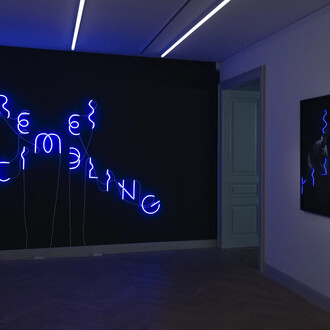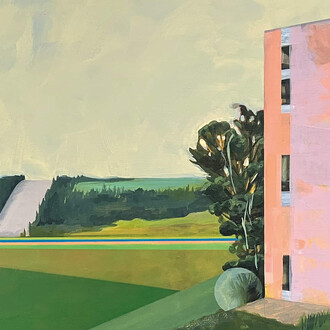In honor of Cuno Amiet’s 150th birthday, bromer kunst is presenting the artist’s oeuvre with selected works of the main subjects interpreted by Amiet, such as portrait, self-portrait, harvest, still life and landscape painting.
The exhibition opened on March 28th 2018, the artist’s birthday.
Cuno Amiet (*28.3.1868 Solothurn, 6.7.1961 Oschwand) is one of Switzerlands most important artists up to the present day.
With his paintings he captured not only the hearts of the Swiss people but also inspired many international artists, critics and collectors. Already during his lifetime until today, many exhibitions have been dedicated to his unique oeuvre and have pursued the goal to position him as a pioneer and a main figure in the European modern art movement.
With a retrospective exhibition commemorating his 150th anniversary, bromer kunst also wants to contribute to the recognition of this exceptional artist. More than 200 paintings, drawings, graphics and sculptures portraying his remarkable eight decades encompassing artistic work, are shown throughout the galleries 1600 m2 of exhibition space. Amiets oeuvre includes a large number of subjects and a rich variety of artistic styles, all of which are represented in this show. From portraits, landscapes and still lifes to his recurrent themes such as harvest, laundry or paradise are on display along ten thematically curated spaces.
In collaboration with the Fondation Cuno Amiet, the Swiss Institute for Art Research (SIK-ISEA) and a group of highly esteemed private collectors, bromer kunst wishes to celebrate the artist, – his creativity, his joy of living and his artistic transcendence.
As the first Swiss painter to give precedence to colour in composition, Cuno Amiet (*28.3.1868 Solothurn, 6.7.1961 Oschwand) was a pioneer of modern art in Switzerland.
At the age of 15, he painted his first self portrait. After studies with the painter Frank Buchser, 1886–88 Amiet attended the Academy of Fine Arts in Munich, where he befriended Giovanni Giacometti. In 1888-92 Amiet continued his studies in Paris at the Académie Julian. After this, he joined the Pont-Aven School in 1892, where he learned from Gauguin and Van Gogh, and he came to prefer the use of pure colour to tonal painting. After his return to Switzerland people would reject this innovation. Ferdinand Hodler’s work exerted a great influence on Amiet and lead him to the art nouveau movement. Between 1906 and 1913 he was a consistent member of the expressionist group „Die Brücke“ . Once again he experimented with pure colours. Amiet’s distinct and vast artistic oeuvre focuses particularly on four thematic issues: Garden, harvest and winter scenes as well as portraits.
In 1898 Amiet moved to Oschwand, where his house became a meeting place for artists and writers.







![Karel Appel, Le coq furieux [The furious rooster] (detail), 1952. Courtesy of Kunstmuseum Bern](http://media.meer.com/attachments/de322f88933729d2014dc4e021d4a6694046a744/store/fill/330/330/c26a6c5ef5e2ed397d4a2e9bc00ac739c40ba8384f45f9ce1ed85adba600/Karel-Appel-Le-coq-furieux-The-furious-rooster-detail-1952-Courtesy-of-Kunstmuseum-Bern.jpg)

![Gego, Bicho 89/17 [Bug 89/17], 1989. Courtesy of Zentrum Paul Klee](http://media.meer.com/attachments/f079a1f4646d2c18046e435b0d7c6a40c4d590ab/store/fill/330/330/15240f8a7c2620c149272c56d3458458d719746e821a8c6a92e906b56287/Gego-Bicho-89-slash-17-Bug-89-slash-17-1989-Courtesy-of-Zentrum-Paul-Klee.jpg)
![Ernst Ludwig Kirchner, Sonntag der bergbauern [Mountain peasants
on sunday] (detail), 1923-24/26. Courtesy of Kunsthalle Bern](http://media.meer.com/attachments/20a8137ccad773c13862ccdfc875e8e9140e882a/store/fill/330/330/2b752c5aa2aa5dd58dbb48294877d0648612d2f7494bb2ea5052c0c3ef43/Ernst-Ludwig-Kirchner-Sonntag-der-bergbauern-Mountain-peasants-on-sunday-detail-1923-24-slash-26.jpg)



